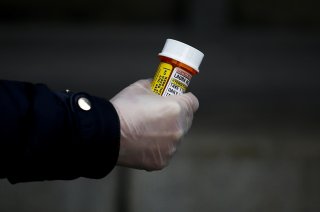It Shouldn't Have Taken A Pandemic To Reform Prescription Refills
Adherence to treatment is higher with 90-day fills, to say nothing of the benefits of avoided trips.
Masks, lockdowns, and toilet paper shortages: There are so many outcomes of the COVID-19 pandemic that we will want to jettison when the pandemic ebbs. However, some innovations we may want to keep: Less time commuting, more telemedicine, and more efficient “drive thru” shopping are just a few of the things that we may wish to retain. Fewer trips to the pharmacy is probably another one.
With the risk of COVID-19, people wanted to avoid more frequent trips to the pharmacy. So, as part of the CARES Act, the federal government has required Medicare Part D plans to provide 90-day refills to people who request them. While most Part D plans allowed 90-day refills for generic drugs prior to the pandemic — and half did for branded drugs — the vast majority of Part D enrollees were in plans where they could not get a three-month supply for a specialty drug. Specialty drugs are typically used to treat serious conditions such as cancer, rheumatoid arthritis, multiple sclerosis, and severe heart conditions. People with those types of conditions in Medicare often have impaired mobility, and they tend to have lower incomes and more serious comorbidities. So why were they also asked to get a refill every 30 days? Adherence to treatment is higher with 90-day fills, to say nothing of the benefits of avoided trips.

For some patients, monitoring is important, and their drugs may be switched. That can be a good reason to have a shorter initial prescription until one’s therapy is stable. However, does that justify 96 percent of plans not allowing a longer fill? More likely, cost is a factor. Specialty drugs are more expensive. People pay more for them, with out-of-pocket costs for Part D beneficiaries often exceeding several thousand dollars with no maximum patient cost liability. Filling a three-month supply may be unaffordable.
But isn’t there a different solution? What if we asked ourselves what would it take for all seniors and disabled people in Medicare Part D to be able to get a three-month supply of pharmaceuticals if it were clinically supported? Putting a cap on how much the Medicare Part D beneficiary would have to pay out of pocket combined with longer refills could mean fewer trips to the physician and reduce cost-related non-adherence. Permitting pharmacists greater ability to manage medication, synchronize prescription refills, and increase their use of telemedicine for check-ins would allow for easier patient monitoring when needed.
Like all proposed health policy changes, there are reasons not to do it. There are drugs where providing a 90-day supply doesn’t make sense, such as scheduled pain medicines. In addition, supply chains may not be able to keep up with a boost in demand in the short term. But we often write policy for the exception rather than the millions of people who can benefit, and adjustments to policy can be made for the exceptions.
There are many things we can’t wait to be rid of during the COVID-19 pandemic, but there are some we should keep. Changes to the healthcare system that limit the need for repeated visits to a pharmacy or physician office without a significant improvement in care should be retained. Requiring longer prescription fills where clinically appropriate should be retained.
William Smith is a Pioneer Institute visiting fellow in the life sciences.
This article first appeared at the American Enterprise Institute.
Image: Reuters.

